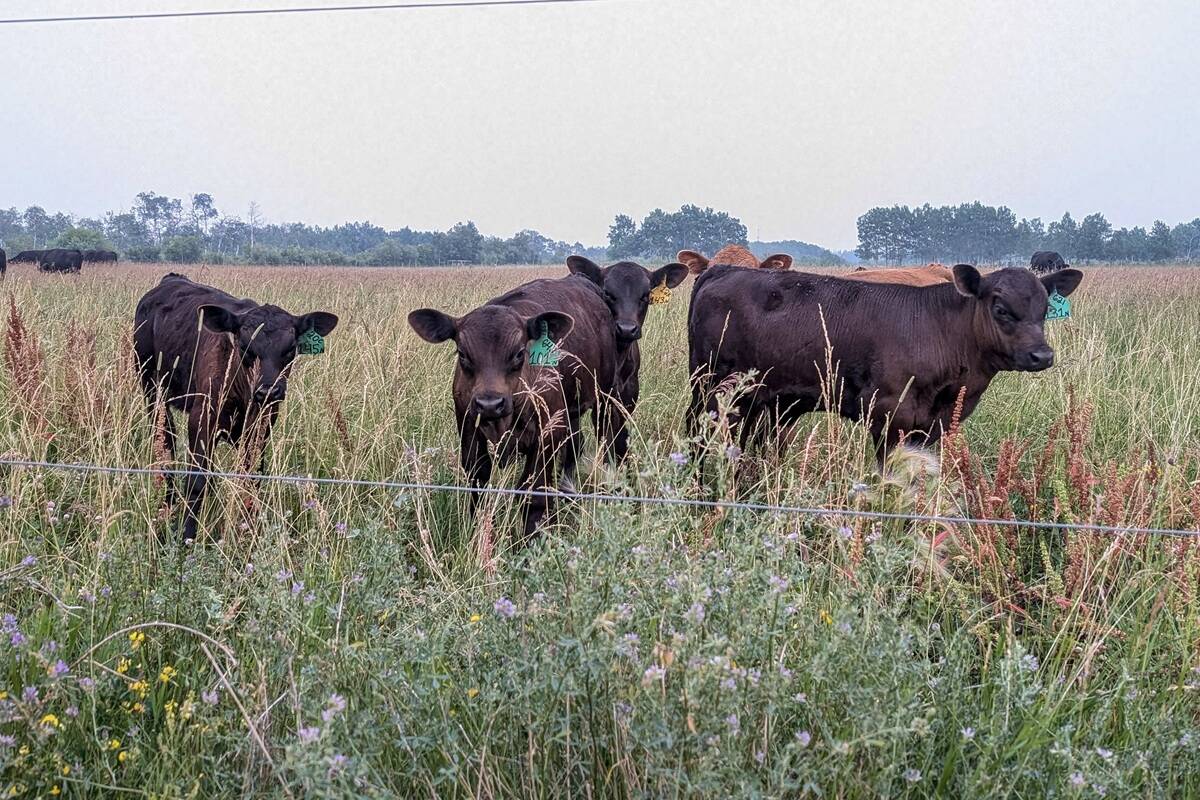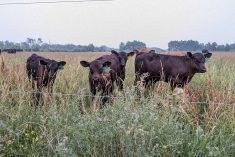Nov. 17 — According to CanFax, the number of feeder cattle placed in Alberta and Saskatchewan feedlots during January through October was 1.682 million head, which is down 5.3 per cent from 1.776 million head for the same timeframe in 2008.
Canadian feeder cattle exports to the U.S. for the first 10 months of 2009 were 270,144, compared to 567,091 last year and 411,874 in 2007. Feeder cattle exports are down 53 per cent from year-ago levels.
Focusing on the supply situation, Canadian calves under age one as of July 1 were down 178,000 or three per cent in comparison to last year. Steers age one year and over were up six per cent and heifers were up four per cent. If I make some rough assumptions about the placements for the rest of Canada, heifer replacement and death loss, the feeder cattle market has about 125,000 more feeder cattle to absorb in November and December in comparison to last year.
Read Also

‘Not a happy Trump supporter’: U.S. Cattle ranchers hit by push for lower beef prices
Much like the price of eggs during the Biden administration, the cost of beef has become an emblem of the affordability crisis in Donald Trump’s America. Beef prices hit record highs earlier this year as the cattle herd shrank and consumer demand remained strong.
The strength in the Canadian dollar has decreased export demand; therefore, look for larger placements over the next month. If we value the Canadian feeder cattle in U.S. dollars, 600- to 700-pound steers in Alberta are up nearly 18 per cent compared to last year in the first half of November and heifers are up 17 per cent. I think this puts the export picture into perspective. During November 2008, the Canadian dollar was near US80 cents compared to current levels near US95 cents. Our Canadian feeder market is somewhat overpriced relative to the U.S.
In the previous issue, I mentioned that the cattle feeder market should be well supported at the current levels, but going over the numbers, the feeder market will have a difficult time maintaining any strength given the current supply situation. Unless we see cow/calf producers finish larger numbers, the feeder market will have to absorb larger domestic supplies over the next couple of months.
— Gerald Klassen is a cattle and hog market analyst in Winnipeg and also maintains an interest in the family feedlot in southern Alberta. He can be contacted by email with any questions or comments.















